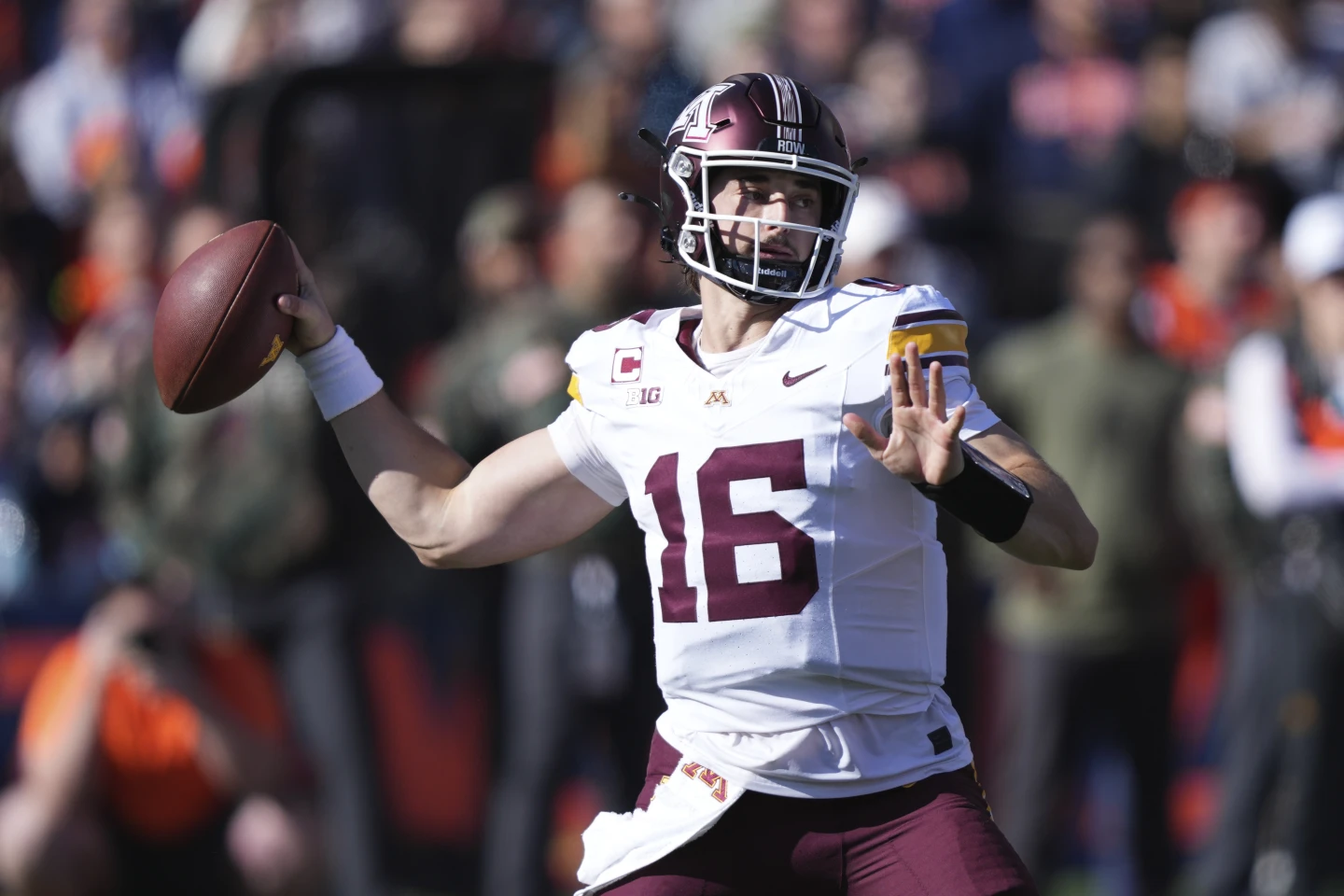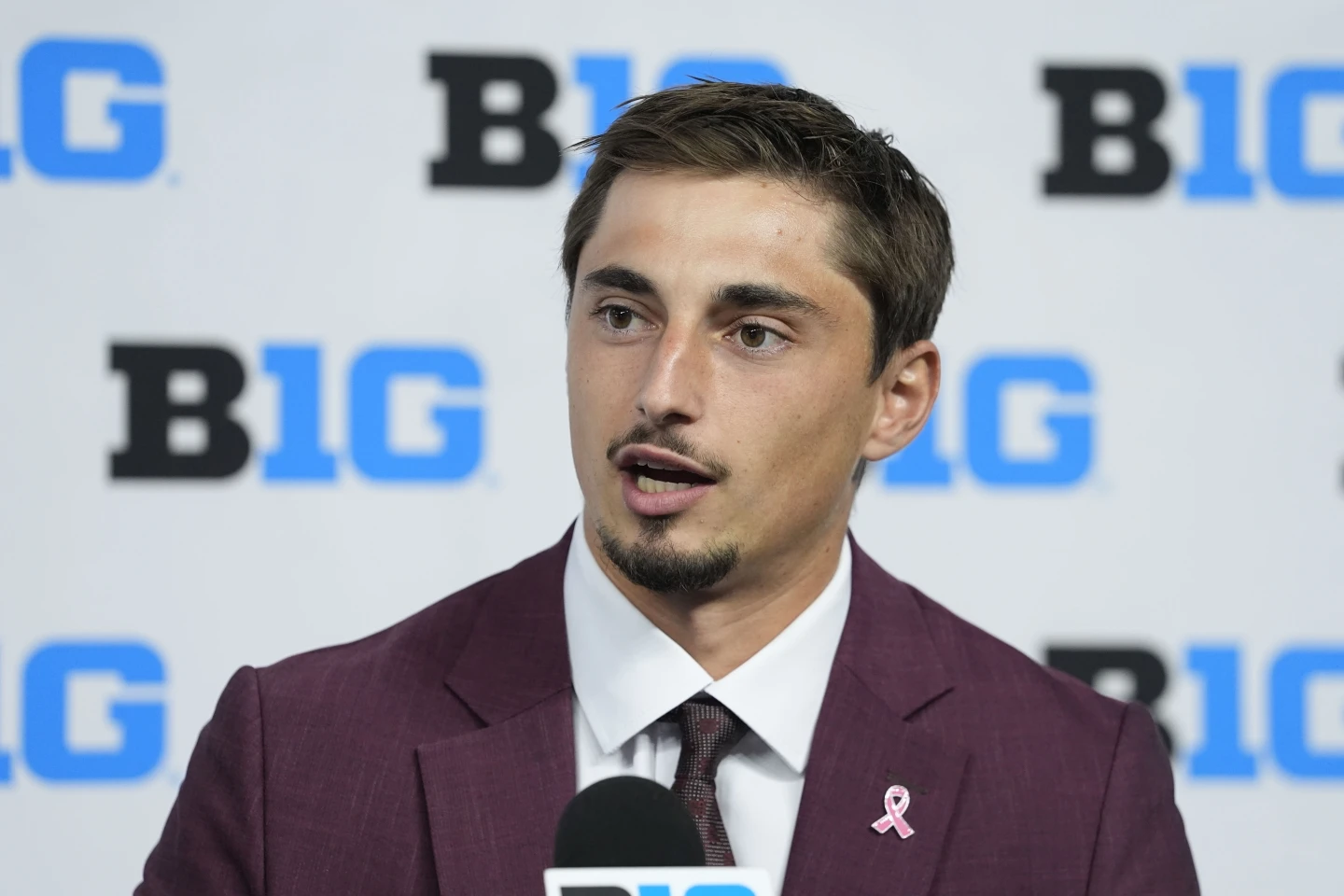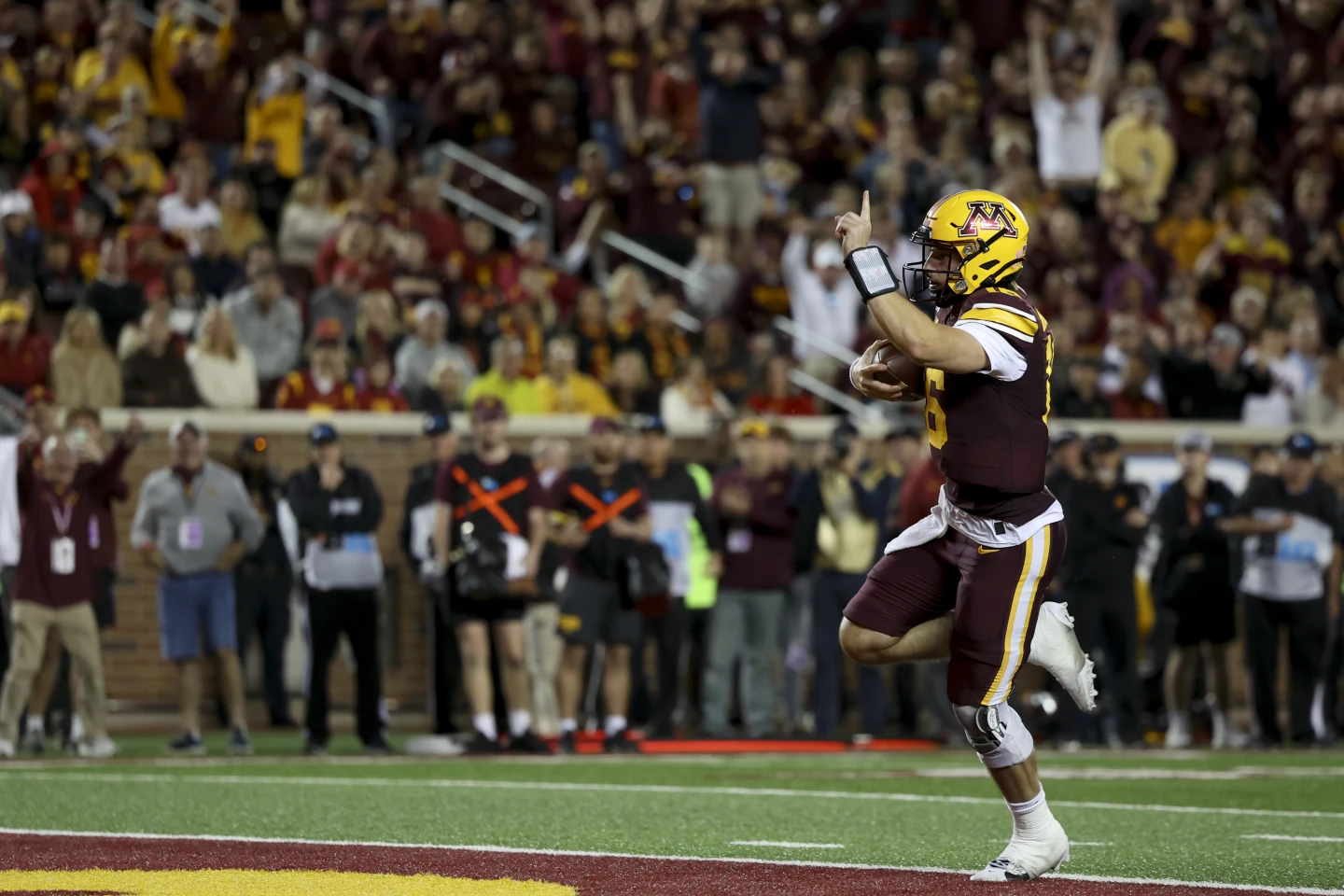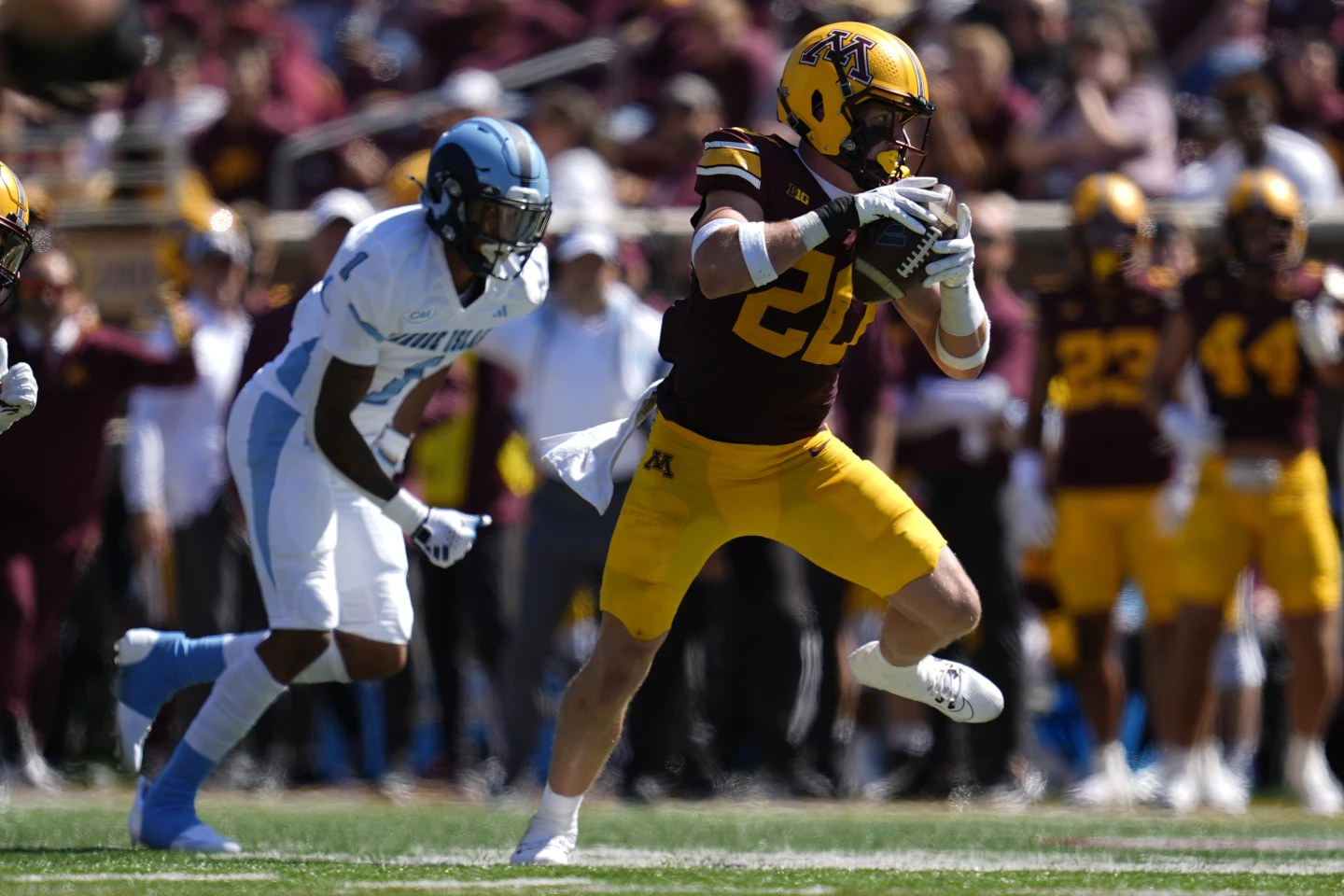When Max Brosmer was at New Hampshire, spring practices were held early in the morning, sometimes right after a snowstorm.
The Wildcats had to start their 6 a.m. workouts in freezing cold temperatures made worse by coastal winds. Before they could practice, the field had to be plowed, but there was nowhere to put the snow piles except in the entrance.
So, players had to put on their cleats and climb over 10-foot snowdrifts just to get started.
“If we had the opportunity to go practice inside, we would’ve done it for sure, but it teaches you a lot of things, I think,” said Brosmer, who transferred to Minnesota this year. “Adding people from different backgrounds, it allows your team to see a perspective and grow tighter as a unit.”
In the FCS, indoor practice facilities are rare, just like many of the perks that come with being in a Power Five conference, such as better meals, tutors, and other benefits.
Moving to Minnesota has given Brosmer, a sixth-year quarterback playing his only season in the Big Ten, a deep sense of gratitude, alongside the chance to compete at the highest level of college football.
Brosmer, who ranks seventh in the Big Ten for pass efficiency rating and sixth in completion percentage, has thrown 14 touchdowns and only 4 interceptions, and he’s rushed for 4 more scores.

His ability to quickly learn the offense has helped Minnesota pass the ball more than run it for the first time in 17 years.
During the recruiting process, Brosmer told coach P.J. Fleck and co-offensive coordinator and quarterbacks coach Greg Harbaugh that he wanted to take full control of the offense on the field. He has impressed them by being highly engaged in game plans and film study.
“I’ve never had a relationship with a player like him where we can have this dialogue,” said Harbaugh.
Starting cornerbacks Jack Henderson, who transferred from Southeastern Louisiana, and Ethan Robinson, who came from Bucknell, are also giving Minnesota an FCS presence in the secondary. The Gophers see their FCS transfers as valuable not only for their talent but for their attitudes as well.
“I’m not saying it’s solely because of what we can afford, but it fits our resources and our ability to have grateful players in this university, our program, and our locker room,” Fleck said. “They are really good players and good people, and I think it’s something we’ll continue to focus on.”
After Minnesota beat Rhode Island earlier this season, Rams coach Jim Fleming mentioned that Gophers assistants were trying to recruit some of his players on the field after the game. He told Fleck about it in a postgame handshake and said he didn’t appreciate the approach.

“I said, ‘Hey, I know I wouldn’t have done it,’” Fleming said in an interview with The Associated Press.
For programs like Minnesota, which aren’t able to offer huge NIL deals to top recruits, the FCS can be a hidden source for finding depth or occasionally discovering standout players like Brosmer, even if it requires moving up two levels.
Nebraska punter Brian Buschini was an FCS first-team All-American with Montana in 2021. Michigan State’s starting left guard Luke Newman came from Holy Cross. Rutgers’ leading receiver, Dymere Miller, transferred from Monmouth.
Wisconsin has two defensive contributors, John Pius (from William & Mary) and Elijah Hills (from Albany), both from the FCS, along with starting cornerback Nyzier Fourqurean, who came from NCAA Division II school Grand Valley State.
“Sometimes you find those guys who are incredibly hungry as opposed to maybe somebody who’s moving laterally, and they’re moving laterally for a reason, whether they couldn’t get it done where they were, maybe didn’t have the work ethic to do it,” said Badgers coach Luke Fickell, who also recruited from the FCS during his time at Cincinnati.
Other power conference schools are also tapping into FCS talent. Colorado coach Deion Sanders brought several players with him from Jackson State, including standout Travis Hunter.
Oklahoma’s leading receiver, tight end Bauer Sharp, came from Southeastern Louisiana. Virginia’s second-leading receiver, tight end Tyler Neville, transferred from Harvard. California’s leading tackler, Teddye Buchanan, moved up from UC Davis.
Pittsburgh running back Desmond Reid, named by the AP as the most surprising player in the ACC, transferred from Western Carolina. Reid was ranked fifth in the FBS in total yards from scrimmage at midseason.

In a win over Cincinnati earlier this season, he became the first player in Panthers history to record over 100 rushing yards and 100 receiving yards in the same game. One reason he was overlooked by other schools? He’s only 5-foot-8.
“He just plays with a chip on his shoulder, and those are the guys I love to coach because they’re never satisfied,” said offensive coordinator Kade Bell. “No matter how he plays, he’s always frustrated, like, ‘Oh man, I could have ran this ball better,’ or ‘Man, I could have hit this hole better.’”
Bell didn’t have to convince head coach Pat Narduzzi to sign Reid. The film from his time at Western Carolina was enough to show what Reid could do. “There’s players everywhere,” Bell said. “It doesn’t matter what level you play at.”
